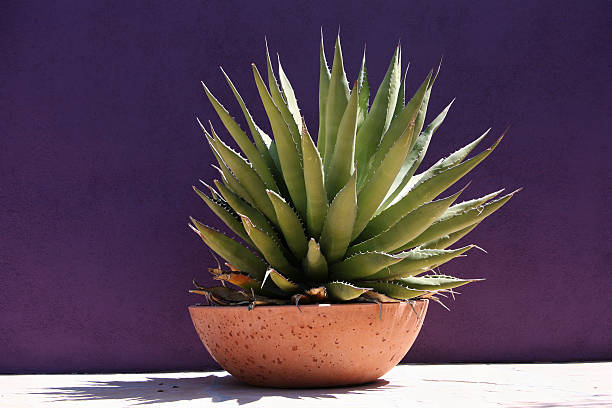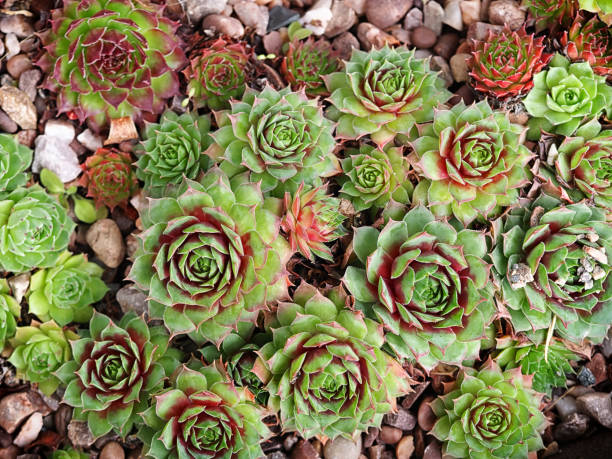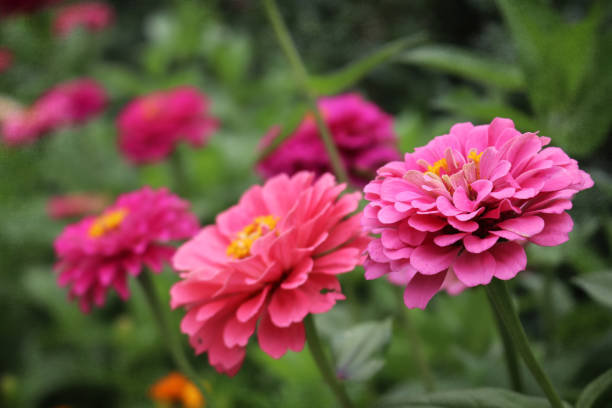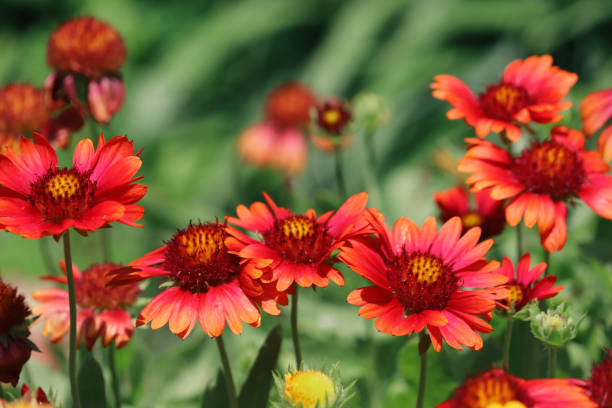Contents
- 1 INTRODUCTION
- 2 WHY HEAT-TOLERANT PLANTS ARE IDEAL FOR CONTAINER GARDENING
- 3 FACTORS TO CONSIDER WHEN CHOOSING HEAT-TOLERANT PLANTS
- 4 TOP 20 HEAT-TOLERANT PLANTS FOR CONTAINER GARDENS
- 5 TIPS FOR MAINTAINING HEAT-TOLERANT CONTAINER PLANTS
- 6 COMMON MISTAKES TO AVOID WHEN GARDENING IN HOT CLIMATES
- 7 CONCLUSION
INTRODUCTION
I categorised my garden into four parts: edibles, house-need Herbs, home decor plants indoor & outdoor, my favourite plant collection (a combination of plants), and experimental plants.
Edible and house-needed herbs are mostly veggies, fruit trees in my ground garden, flowering plants in the ground and containers, and herbs in containers. I grow these plants for my needs so I can adopt heat-tolerant plants and do extra work to protect them from heat-tolerant plants. It’s a combination of plants.
Home decor plants are mostly shade-loving plants, and few of them are chosen based on the spot’s sunlight and I’ve options to choose heat-tolerant plants.
My favourite collection of plants is mostly heat-tolerant and drought-tolerant because I need my little green babies to live for long years so I mostly choose heat-tolerant plants. And it’s a combination of foliage.
The experimental plants are not my personal choice, it’s for my research purpose to give you some real facts. How is it doing in hot, cold, windy, rainy weather? These plants are used for my potting mix experiments, fertiliser experiments, and watering experiments mostly these are grown from seeds and saplings.
So now I am going to give some hacks and tips to choose heat-tolerant plants that are combined with my experience and knowledge from my fellow gardeners.
Challenges of container gardening in hot climates
Being a plant enthusiast and living in heat regions is not a great combo. Of course, you have got the perks of sunlight for most of the year. Plants gonna thrive. But growing plants in hot weather is quite challenging. Frequent watering, quick drying soil, leaf scorches. Sometimes your seedlings do not make it.
I saw my annuals burned in my Indian summer. even last September I ‘didn’t see any good signs of rain but facing 30 degrees Celsius of heat every day, of course, I might get surprised but November or December rains.
Initially, I thought, placing plants in semi-shaded areas, and using shade nets would help. But the reason is not only sunlight, extreme heat waves and less humidity also affect the plants.
It doesn’t mean I stopped growing plants; I took safety precautions like setting up a greenhouse for edible plants. And switch to shade-loving plants. Adjusting my Watering techniques. These are okay for me because it’s my work and I’m passionate about this.
But if you just want to grow plants as a hobby you can’t do these chores for a long time. But you can adopt heat-tolerant plants for your hot weather.
Importance of choosing heat-tolerant plants
If you live in extremely hot weather countries, it’s better to adopt heat-tolerant plants. So, you can have a peaceful gardening experience. You can grow various plants and experiment with various species. But as a beginner or a hobby gardener try to keep it shuttle.
Because the different kinds of plants require different kinds of plant care, watering, soil and fertilizers. In starting you’re so curious about plants so you might handle these chores but you might feel hesitant to do chores along with your day-to-day work and job. It can affect your plant growth.
People who are in full-time gardening are some kinds of professionals like nursery owners and gardening content creators (like me) our work is based on these plants. We earn money from gardening and we invest our money and time in gardening. So, try to adopt plants that are suitable for your weather conditions.
Benefits of container gardening in hot regions
- You can grow vegetables, edible plants and sun-loving flowers all over the year. An extended growing season.
- More sunlight more photosynthesis, just choose heat-tolerant and sun-loving plants to get a lush garden all over the year.
- You can grow lots of heat-tolerant varieties like cacti and succulents, hardy plants and sun-loving edibles.
- The warm climate speeds up the photosynthesis so the plant grows.
- Growing plants in containers rather than ground gardening in hot weather helps to conserve water, you can move plants if it’s extremely hot.
- Also, containers give the perks of controlled temperature in the soil in pots.
- You can experiment with Xeriscaping – create gardens using heat-tolerant and drought-tolerant varieties.
WHY HEAT-TOLERANT PLANTS ARE IDEAL FOR CONTAINER GARDENING

When you’re walking through your Container Gardening in your Hot regions. You might see some leaves are brown, some plants struggle to thrive, and dry soils and your seedlings struggle to make it. Maybe these are the reasons behind those issues.
Heat Stress and its Effects
Exposure to high temperatures and insufficient watering is a barrier to your growth. But if you think I’m watering well my plants are in semi-shade. Just recheck these things too.
- Smaller soil volume the Pot holds only a limited amount of soil, but if you’re not noticing the soil compaction or less soil than the ideal limit it also leads to an issue of water retention less soil holds less water and nutrition. Fill up the soil till the plants’ roots are fully covered and cover half of the stem below you see any leaves or fruit anything.
- Water evaporation in hot weather the water inside the pots also dries quickly leading to wilted leaves and prone. Using a water-retention soil mix and adding mulch is helpful.
Key features of heat-tolerant plants
Heat-tolerant plants are adapted to withstand hot weather thing makes the plants ideal for hot regions.
- Drought Resistance Most heat-tolerant plants preserve water in themselves their structure of waxy leaves, reduced leaf size and thick foliage designed to survive in drought weather.
- Deep-rooted system of heat-tolerant plants can access water in every part of the soil more efficiently. So, the possibility of dry soil is less.
- Succulents are naturally structured to store water in their leaves and stems to survive in extremely hot weather. It’s the best choice for hot regions.
- Water efficiency these plants naturally absorb water sparingly to survive in hot weather.
FACTORS TO CONSIDER WHEN CHOOSING HEAT-TOLERANT PLANTS

There are some different kinds of heat-tolerant plants., they’ve different heat-tolerance levels and watering needs just read and know about those kinds and choose a plant that is exactly suited for your location.
Sun-Exposure
- Full-sun most of the heat-tolerant plants come under this category. This plant thrives in 6+ hours of sunlight daily. Plants like cacti succulents and Mediterranean herbs have come under these.
- Partial-shade plants are not sun-loving but heat-tolerated you can place these plants where you can receive morning and evening sunlight, these plants are less tolerable to the high temperature of afternoons. You can move them in partial shade on hot afternoons.
Watering Needs
- Drought-tolerant plants like cacti succulents, and grasses are natural water savers. They store water inside them to survive extremely hot weather. If you want to place containers outdoors these drought-tolerant varieties are good choices. They also don’t frequent watering and survive hot weather.
- Moisture-loving plants Some of the tropical species’ heat-tolerant plants are moisture-loving they want their soil to be moisture retention. They need regular watering and make sure these varieties are in pots with drainage holes.
TOP 20 HEAT-TOLERANT PLANTS FOR CONTAINER GARDENS
Succulents
ALEO VERA

Aleo vera Tolerates full sun and survives without frequent watering hates overwatering, well-drained soil and pots with drainage holes are preferable.
SEDUM

Sedum is a low-growing succulent with fleshy leaves that stores water inside, so no need for frequent watering prefers full-sun, well-draining soil and pots with drainage holes.
ECHEVERIA

Echeveria a rosette-shaped succulent, easy-to-grow, easy to propagate. Thrive in full sun and need well-drained soil and pots with drainage holes.
AGAVE

Agave is a thick and spiky plant that stores water. Loves full sun and prefers well-drained soil mix.
Cactus
OPUNTIA

Opuntia a paddle-shaped cactus with spines. Highly drought-tolerant and heat-resistant.
Mammillaria

Mammillaria small round-shaped cactus with spines and flowers. Thrive in full sun prefers well-drained soil.
BARREL CACTUS

Barrel cactus a barrel-shaped cacti with ribs and spines. Highly heat-resistant ideal for arid climates.
Gasteria 'Little Warty'

Gasteria Little Warty thrives in heat, showcasing resilience, unique texture, and low-maintenance care requirements.
Flowering Plants
LANTANA

Lantana is a heat-tolerant flowering shrub with a tiny bunch of flowers. A pollinator-attracting plant that loves full sun.
PORTULACA

Portulaca is a low-growing succulent with bright little flowers. Tolerate high heat and drought.
ZINNIA

Zinnia is a drought-tolerant annual flowering plant with beautiful flowers. A sun-loving plant, you can collect seeds after the bloom for the next seasons.
GAILLARDIA

Gaillardia is a drought-tolerant perennial and available in bulbs. Prefers full sun and drought tolerant. A beautiful eye-catching Flowering plant.
Herbs
ROSEMARY

Rosemary is a hair-growth herb with a beautiful aroma that thrives in full sun. Extremely drought tolerant once established. Keep it in partial shade until it reaches its mature size Saplings or seedlings are less sun-tolerant.
THYME

Thyme is a kitchen herb with a low-growing character with small fragrant leaves. Thrives in full sun and prefers well-drained soil.
OREGANO

Oregano is a hardy drought-tolerant herb that loves full sun and is ideal for dry weather too.
VEGETABLES
TOMATOES

- Tomatoes are sun-loving veggies you can grow any kind of tomatoes in the sun with proper care.
EGGPLANTS

- Eggplants thrive in hot and sunny climates. A drought-tolerant veggie that prefers well-drained soil and pots with drainage holes.
PEPPERS

- Peppers love heat weather thrive in full sun, drought tolerant once it is established.
OKRA

- Okra is a drought-tolerant veggie that thrives in full sun and is ideal for dry and heat climates.
TIPS FOR MAINTAINING HEAT-TOLERANT CONTAINER PLANTS

Normal sun-loving plants can survive near 40 degrees Celsius; desert succulents and cacti can survive nearly 70 degrees Celsius., veggies that love the sun tolerate nearly 30 degrees Celsius. These are some common facts but if you see signs like wilting, dry soil and leaves scorches you need to take some care as I mentioned below.
- Deep watering is a method in which you should water slowly and deeply so the plant can absorb water thoroughly. You can use a Hose nozzle to water deeply.
- Mulching is a process to keep the soil moisture and protect it from water evaporation.
- Water retention is a method of adding more moisture retention soil mix into the potting soil.
- Shade Cloth might be helpful if you place container plants in open spaces that get too much heat and direct sunlight more than the required levels or if you facing extreme hot weather.
- Partial-shade is the method I follow. In extreme heat waves, my location can reach up to 100 degrees Fahrenheit, my last summer was around 110 degrees Fahrenheit. At that time, I moved my sun-loving plants into partial-shade areas. I saved my plants.
- Clay pots are the best option for hot regions they absorb and hold water and they’re eco-friendly. Also, clay pots absorb low heat.
- Plastic pots might be a considerable option if they’re UV-resistant. Because normal plastic with continuous Sunlight exposure damages the material.
- Metal pots (a no) These pots are not a choice for summers because of their heat-absorbing nature.
- Fertilisers in hot weather it is better to use non-synthetic organic fertilizers. Also, these slow-release fertilisers are effective for the long term.
- Soil care uses cocopeat with organic matter helps to retain moisture.
COMMON MISTAKES TO AVOID WHEN GARDENING IN HOT CLIMATES

Some of us thought watering more was a solution to handle the heat like we had more water in summer. That’s a myth having empty water does not keep as hydrated, instead, we should intake healthy fruits and alter our diets. The same rule applies to our plants in hot weather. Here are some mistakes you should avoid in hot climates.
Overwatering
As I said earlier more watering is not a solution, instead you need to water how much the plant pot can hold. Deep watering is also helpful. The limited space only holds limited water so instead of water more water when you feel the top soil feel dry.
Most of the heat-tolerant plants love well-drained soil, so overwatering only makes the soil soggy and Heat-tolerant plants hate that.
Underwatering
Heat-tolerant plants need less frequent watering not no watering. Even they also slow their growth when they don’t receive enough water. Water deeply and check that water comes down under drainage holes that the sign of fully watered.
Choosing wrong plants
Choose plants that are heat-tolerant check the heat-tolerance level of the plant before buying or choose to place them in sunlight. Placing non-heat-tolerant plants in direct sunlight only burns down the plant.
Size of the Containers
Heat-tolerant plants are deep-rooted that hold and reach every part of the soil to access water. These bigger rooted plants struggle to grow in smaller pots. Choose a pot size that is 2 inches bigger than a plant’s root ball.
CONCLUSION
Choosing heat-tolerant plants with heat-resisting characteristics and growing them in your hot regions is a happy gardening experience. These plants gave the advantage of growing container plants outdoors, in sunny spots.
Growing plants in extreme hot weather is challenging but with this blog post, you can choose the right heat-tolerant plants and tips to care for these plants.
These heat-tolerant plants are one of the climate-related choices., there are various climate conditions and different seasons. Experimenting with plants for your local climate zones helps create a garden adapted to your climate.
Visit mypotsgarden.com to explore more hacks and knowledge about Container Gardening and create a garden oasis in any space you want.



Pingback: UNDERSTAND WATERING NEEDS FOR CONTAINER GARDENING SUCCESS
Pingback: WHY SUNLIGHT MATTERS FOR PLANTS: 6 TIPS FOR BEGINNERS
Pingback: HOW TO CHOOSE THE PERFECT HANGING BASKET FOR PLANTS - 4 EASY TIPS
Pingback: 6 KEY FACTORS IMPACTING SUNLIGHT IN CONTAINER GARDENS
Pingback: 5 COMMON BALCONY SUNLIGHT ISSUES YOU MUST TACKLE – My Pots Garden
Pingback: INDOOR PLANTS LIGHT REQUIREMENTS: A COMPLETE GUIDE FOR THRIVING GREENERY
Pingback: FERTILISERS FOR POTTED PLANTS: ESSENTIAL GUIDE FOR BEGINNERS
Pingback: BEST SUNLIGHT GUIDE: MATCH PLANTS TO SUN EXPOSURE ZONES – My Pots Garden
Pingback: BEST VERTICAL PLANTERS FOR STUNNING SMALL SPACE GARDENS